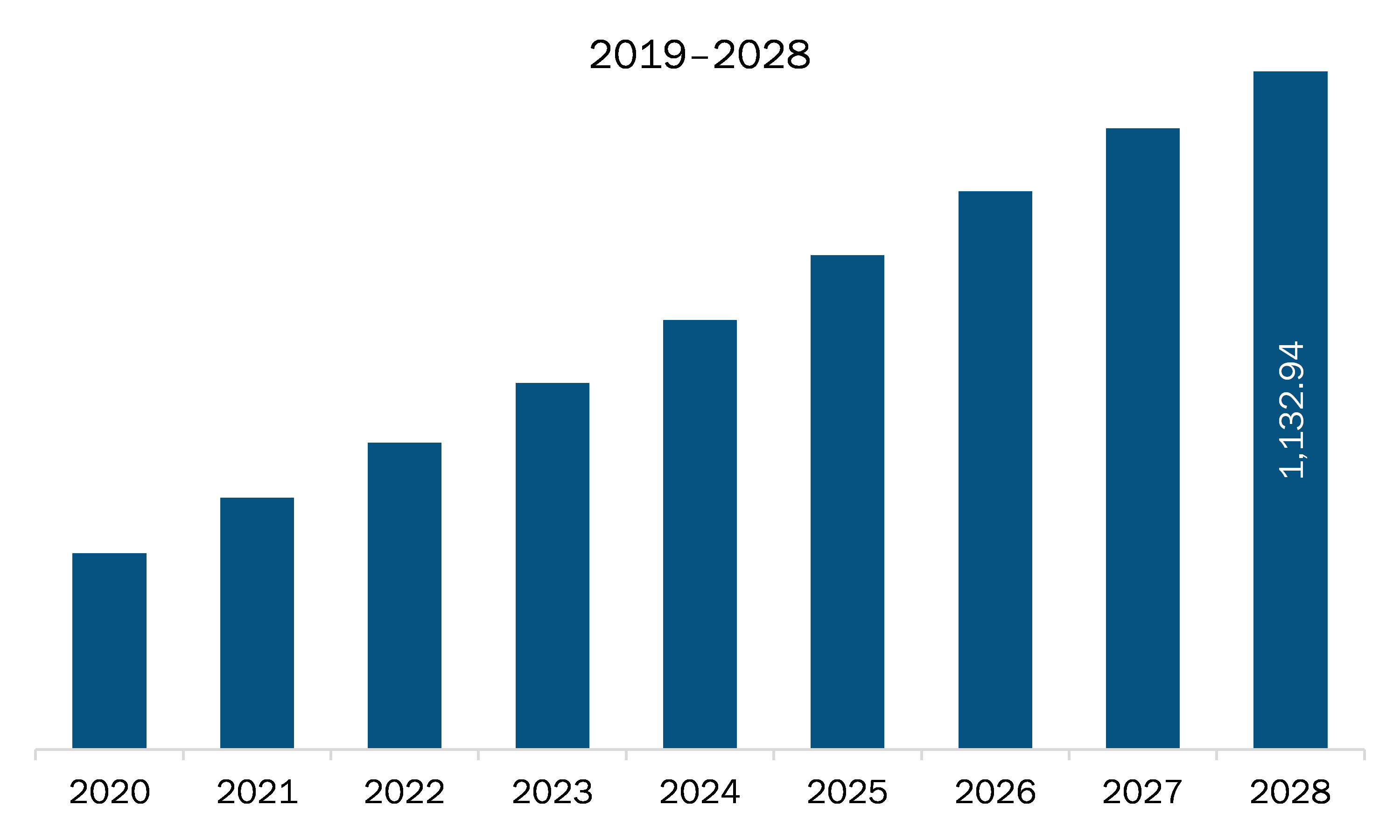The N95 masks market in APAC is expected to grow from US$ 420.82 million in 2021 to US$ 1,132.94 million by 2028; it is estimated to grow at a CAGR of 15.2% from 2021 to 2028.
Companies operating in the non-PPE markets have started investing in the PPE production businesses to support the effective supply of products such as respiratory masks. The PPE manufacturing companies are focusing on expanding their business in developing countries. In August 2020, Honeywell International Inc. launched an N95 mask market production unit in its Fulgaon facility in India, with a major aim to supports frontline healthcare workers, emergency responders, and government organizations during the COVID-19 pandemic. The company targeted to reach the maximum production capacity of ~2 million masks per month. Further, in response to the burgeoning demand in the general population, many local mask producers are coming up with innovative and low-cost products. They are also engaging in other business activities supporting the scaling up of production capacities, such as the supply of raw materials. Moreover, governments have started strictly regulating the pricing and stocking of the N95 masks to avoid unethical business practices.
In case of COVID-19, APAC is highly affected specially India. According to the World Health Organization (WHO), “COVID-19 spreads primarily through droplets generated when an infected person coughs, sneezes or speaks. Surgical masks and N95 respirators are used to prevent the spread of respiratory infections. They are part of the personal protective equipment (PPE) used by health workers and are different from other types of masks used to protect from pollution or dust. As the coronavirus is transmitted via droplets of fluid from the nose or mouth, face masks are essential for health workers who are in direct contact with infected patients. In February 2020, Guan Xunze’s company created a new mask factory in just eleven days. The factory, with five production lines in northeastern China, made the much-needed N95 face masks which were in huge demand as infection numbers surged. Further, Honeywell has added a N95 face mask production line at our Fulgaon facility in India to help support frontline healthcare workers, emergency responders and government organizations responding to the COVID-19 pandemic. Additionally, As for N-95 masks, the country has gone from producing 2 million units per month to nearly 25-30 million units per month. There are currently 241 manufacturers of N95 masks in the country, and exports have been allowed. India has become a significant manufacturer of N-95 masks in a short time span. However, the use of surgical mask instead of N95 in the region will have a negative impact on the market. For instance, currently, of the 200 million masks China makes a day, only 600,000 are N95 standard masks, used by medical personnel, according to the National Development and Reform Commission, a state planning body. Provincial regulators have granted dozens of new licenses to open additional factories capable of producing top-grade masks, including those that meet the standards for use by health-care professionals.
With the new features and technologies, vendors can attract new customers and expand their footprints in emerging markets. This factor is likely to drive the N95 masks market. The APAC N95 masks market is expected to grow at a good CAGR during the forecast period.

- This FREE sample will include data analysis, ranging from market trends to estimates and forecasts.
APAC N95 Masks Market Segmentation
APAC N95 Masks Market – By Product
- Without Exhalation Valve
- With Exhalation Valve
APAC N95 Masks Market – By Distribution Channel
- Offline
- Online
APAC N95 Masks Market -By End User
- Construction
- Manufacturing
- Healthcare
- Mining, Oil and Gas
- Others
APAC N95 Masks Market- By Country
- China
- Japan
- India
- Australia
- South Korea
- Rest of APAC
APAC N95 Masks Market-Companies Mentioned
- 3M COMPANY
- ALPHA PRO TECH, LTD.
- Ansell Limited
- Cardinal Health Inc
- Honeywell International Inc.
- Kimberly-Clark Corporation
- Medisca Inc
- Medline Industries, Inc.
Asia Pacific N95 Masks Report Scope
| Report Attribute | Details |
|---|---|
| Market size in 2021 | US$ 420.82 Million |
| Market Size by 2028 | US$ 1,132.94 Million |
| CAGR (2021 - 2028) | 15.2% |
| Historical Data | 2019-2020 |
| Forecast period | 2022-2028 |
| Segments Covered |
By Product
|
| Regions and Countries Covered |
Asia-Pacific
|
| Market leaders and key company profiles |
|
- Historical Analysis (2 Years), Base Year, Forecast (7 Years) with CAGR
- PEST and SWOT Analysis
- Market Size Value / Volume - Regional, Country
- Industry and Competitive Landscape
- Excel Dataset
Recent Reports
Testimonials
Reason to Buy
- Informed Decision-Making
- Understanding Market Dynamics
- Competitive Analysis
- Identifying Emerging Markets
- Customer Insights
- Market Forecasts
- Risk Mitigation
- Boosting Operational Efficiency
- Strategic Planning
- Investment Justification
- Tracking Industry Innovations
- Aligning with Regulatory Trends





















 Get Free Sample For
Get Free Sample For